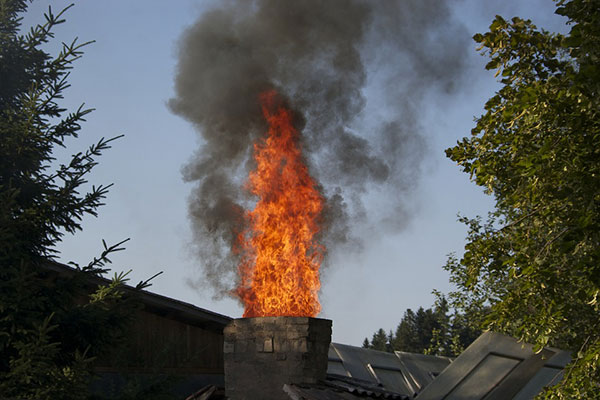Everyone wants to enjoy their chimney. Most do not realize the risks they have if they do not schedule a routine chimney sweep. Chimney fires are serious and can lead to house fires. Below are some helpful tips on how to prevent chimney fires from happening.
Use proper fuel
Fuel of any sort needs to be made sure that it is proper for the chimney or fireplace. Make sure the wood is seasoned, or properly dried, and when choosing a type of wood, go for a hardwood like oak, maple, or ash. A few logs of greenwood can build creosote thick enough to start a chimney fire. Stay away from unseasoned wood, or wood that has not been dried properly, due to it causing more smoke than anything.
Proper installation
Your wood stove or furnace must be installed properly and by a professional. This is to ensure there is proper distance between the flammable parts and the non-combustible parts of the heating system. A wood stove’s chimney must be brick made (masonry) and factory built. Single bricked chimney with no liner must never be used for a wood stove. It is for safety reasons.
Chimney cleaning
Having a chimney means regular maintenance. Get a professional chimney sweep to inspect your chimney at least annually. This should be even more frequent if the fireplace is lit regularly.
You can also do it yourself by using a brush and rods to clean the chimney flue and stove pipe. Most people realize that it does take hours to do if you are not used to do this type of work. Typically, if it is done by a professional, then it only takes around forty-five minutes. This must be done once or twice a year. Avoid using heavy stuff such as bricks or chains on the end of a rope. This can easily damage the chimney’s liner. Your chimney will, however, need a monthly inspection by a professional chimney technician if you use a wood stove.
For DIY purposes, you can check for creosote buildup in the chimney walls using a mirror.
Ensure there is less or no creosote buildup
Creosote is highly flammable and when it is ignited, and it burns with vigor. Creosote is formed when vapor from wet wood mixes with gases and condenses. Chimney professionals state that a ¼in thickness of creosote means your chimney can burst into flames any minute and thus should be removed. In the same breath, do not ignore soot buildup. Soot is softer than creosote, but is equally flammable and should be cleaned up regularly.
Use Smoke Detectors
With the help of smoke detectors, troubleshoot and take action immediately any time smoke is detected indoors. The smoke is most likely a result of a dirty chimney full of debris like dead leaves, twigs, soot or creosote buildup that have resulted in chimney flue blockage. Other causes include soft or wet wood that has not burned completely or a damper that is not fully opened.
Useful Installations
Your chimney should have a chimney cap with wire mesh to keep out rainwater, ice, and snow. It should also be used to keep out small animals like squirrels, raccoons, bats, and birds from nesting inside the walls. When installing a chimney liner, go for stainless steel. The stainless steel can endure very high temperatures and also contain flying embers contained.
Installing fireplace glass-doors that are heat proof can also help increase the efficiency of your heating system. The door prevents heat loss and also shields the embers within the fireplace to stop wild sparkles from reaching your house’s interior. The doors should be cleaned regularly with a glass door cleaner and paper towel.
Proper Ventilation is Really Important
Ventilation is one of the most important parts of your home’s heating system. A huge percentage of chimney fires, safe to say 90%, is caused by faults within the venting system. Take note that the venting system is not the same as the chimney system.
The venting system consists of a stove pipe that connects the burning stove to the chimney. Most importantly, we cannot reiterate enough the need for a clean chimney to prevent a chimney fire. The interior of your fireplace has to be cleaned regularly including the hearth. Rid the fireplace of ash but only when it has cooled. And leave just a little that will make lighting the fire easier. Wear protective gear while cleaning your fireplace on your own.
Here at SootAway, we take pride in servicing you with out certified expert technicians. They have years of experience and are willing to schedule a routine chimney sweep to lower your risk of a chimney fire or worse, a house fire from the flames spreading.


Recent Comments